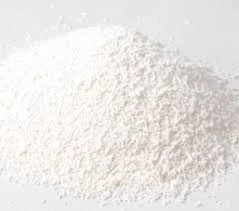
Utilizing Titanium Dioxide as an Effective Additive in Various Applications
The Versatility and Benefits of Titanium Dioxide Additives
Titanium dioxide (TiO2), a naturally occurring oxide of titanium, is renowned for its unique properties and diverse applications. It is primarily known for its role as a white pigment, imparting brightness and opacity in a variety of products. However, titanium dioxide also serves as an effective additive across multiple industries, including paints, cosmetics, food, and pharmaceuticals. This article explores the versatility and benefits of titanium dioxide additives, shedding light on their significance and impact.
1. Paints and Coatings
In the paints and coatings industry, titanium dioxide is unparalleled in its performance as a pigment. Its high refractive index allows it to scatter light efficiently, resulting in vibrant and opaque coatings. This property not only enhances the aesthetic appeal of paints but also improves their durability and resistance to UV degradation. Consequently, titanium dioxide additives are crucial in the formulation of exterior paints and coatings designed to withstand harsh environmental conditions.
Moreover, the use of titanium dioxide can contribute to energy efficiency. When applied to roofs or exterior walls, TiO2-based coatings can reflect sunlight, helping to lower building temperatures and reduce energy consumption for cooling. This characteristic aligns with growing environmental concerns and the push for sustainable building materials.
2. Cosmetics and Personal Care Products
In the cosmetics industry, titanium dioxide is a popular ingredient due to its ability to provide sun protection while also enhancing the texture of products. Commonly found in sunscreens and moisturizers, TiO2 serves as a physical UV filter that protects the skin from harmful ultraviolet rays. Its broad-spectrum protection makes it a preferred choice for formulating effective sunscreens, particularly for those with sensitive skin.
Additionally, titanium dioxide enhances the opacity of cosmetic products, ensuring smoother application and better coverage. Its safe and non-toxic nature allows it to be widely used in various personal care products, including powders, foundations, and lotions.
titanium dioxide additive

3. Food Industry
While it may seem surprising, titanium dioxide also finds its application in the food industry. It is used as a colorant and anti-caking agent in a range of food products, providing a bright white hue. For example, TiO2 can be found in products such as dairy items, confections, and processed foods, where it improves visual appeal and texture.
Though its use in food has raised some safety concerns, regulatory bodies like the Food and Drug Administration (FDA) have deemed titanium dioxide safe when used within specified limits. This highlights the necessity of balance between boosting aesthetic qualities and adhering to health standards.
4. Environmental Applications
Beyond aesthetics and functionality, titanium dioxide is making strides in environmental applications, particularly in photocatalysis. When activated by ultraviolet light, TiO2 can decompose organic pollutants in air and water, making it a valuable asset in environmental remediation efforts. This property is harnessed in air purifiers and water treatment systems, showcasing how titanium dioxide not only enhances product performance but also contributes to ecological sustainability.
Conclusion
In summary, titanium dioxide additives are integral to various industries, offering a plethora of benefits ranging from improved aesthetics to enhanced product performance and environmental remediation. As consumers increasingly demand sustainable and effective solutions, the role of titanium dioxide is likely to grow, paving the way for innovative applications that prioritize both efficacy and ecological responsibility. With ongoing research and development, titanium dioxide's potential will continue to expand, reinforcing its status as a versatile additive in a rapidly evolving market.
-
The Safety Challenges of Ammonium Nitrate FertilizerNewsJun.26,2025
-
The Critical Role of Mining ChemicalsNewsJun.26,2025
-
Shelf Life of Glacial Acetic Acid Food GradeNewsJun.26,2025
-
Enhancing PVC Longevity with 1,2,3-Benzotriazole InnovationsNewsJun.26,2025
-
China’s Dominance in Food Additive ProductionNewsJun.26,2025
-
Can Aluminum Hydroxide Replace More Toxic Alternatives?NewsJun.26,2025
-
PE and PP Plastics with Benzotriazole AdditivesNewsJun.12,2025
Hebei Tenger Chemical Technology Co., Ltd. focuses on the chemical industry and is committed to the export service of chemical raw materials.
-

view more DiethanolisopropanolamineIn the ever-growing field of chemical solutions, diethanolisopropanolamine (DEIPA) stands out as a versatile and important compound. Due to its unique chemical structure and properties, DEIPA is of interest to various industries including construction, personal care, and agriculture. -

view more TriisopropanolamineTriisopropanolamine (TIPA) alkanol amine substance, is a kind of alcohol amine compound with amino and alcohol hydroxyl, and because of its molecules contains both amino and hydroxyl. -

view more Tetramethyl Thiuram DisulfideTetramethyl thiuram disulfide, also known as TMTD, is a white to light-yellow powder with a distinct sulfur-like odor. It is soluble in organic solvents such as benzene, acetone, and ethyl acetate, making it highly versatile for use in different formulations. TMTD is known for its excellent vulcanization acceleration properties, which makes it a key ingredient in the production of rubber products. Additionally, it acts as an effective fungicide and bactericide, making it valuable in agricultural applications. Its high purity and stability ensure consistent performance, making it a preferred choice for manufacturers across various industries.











